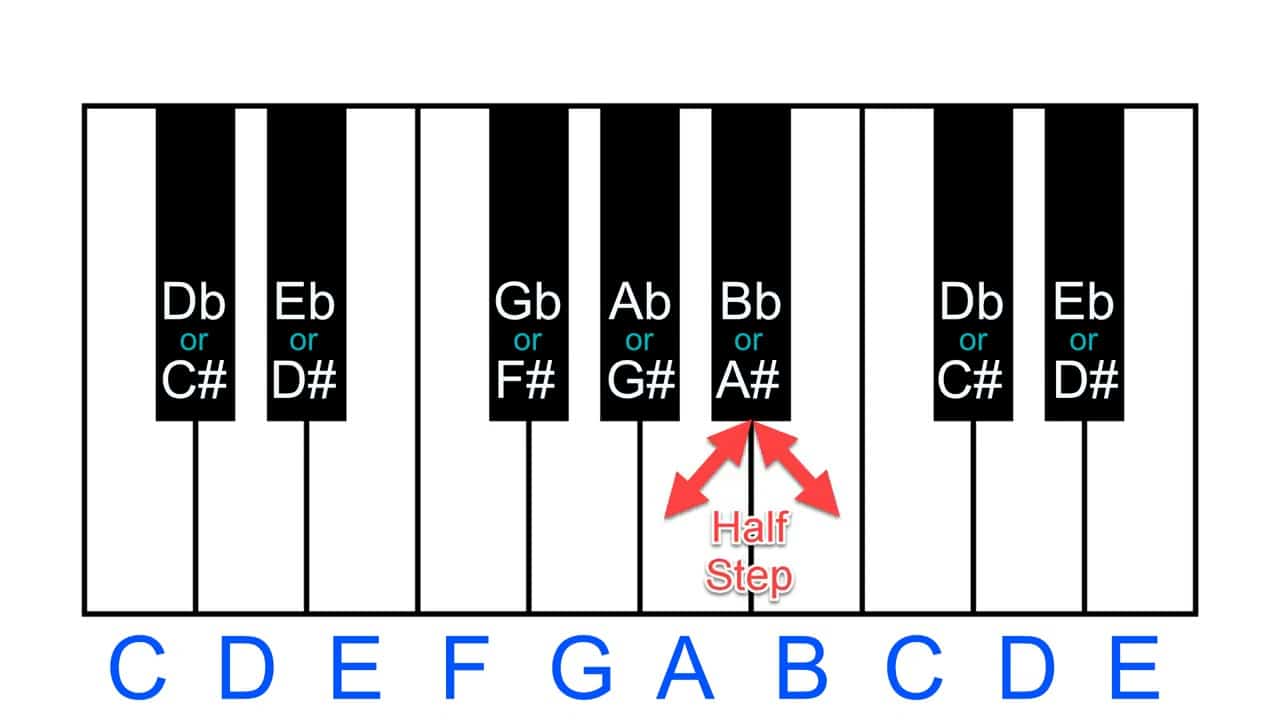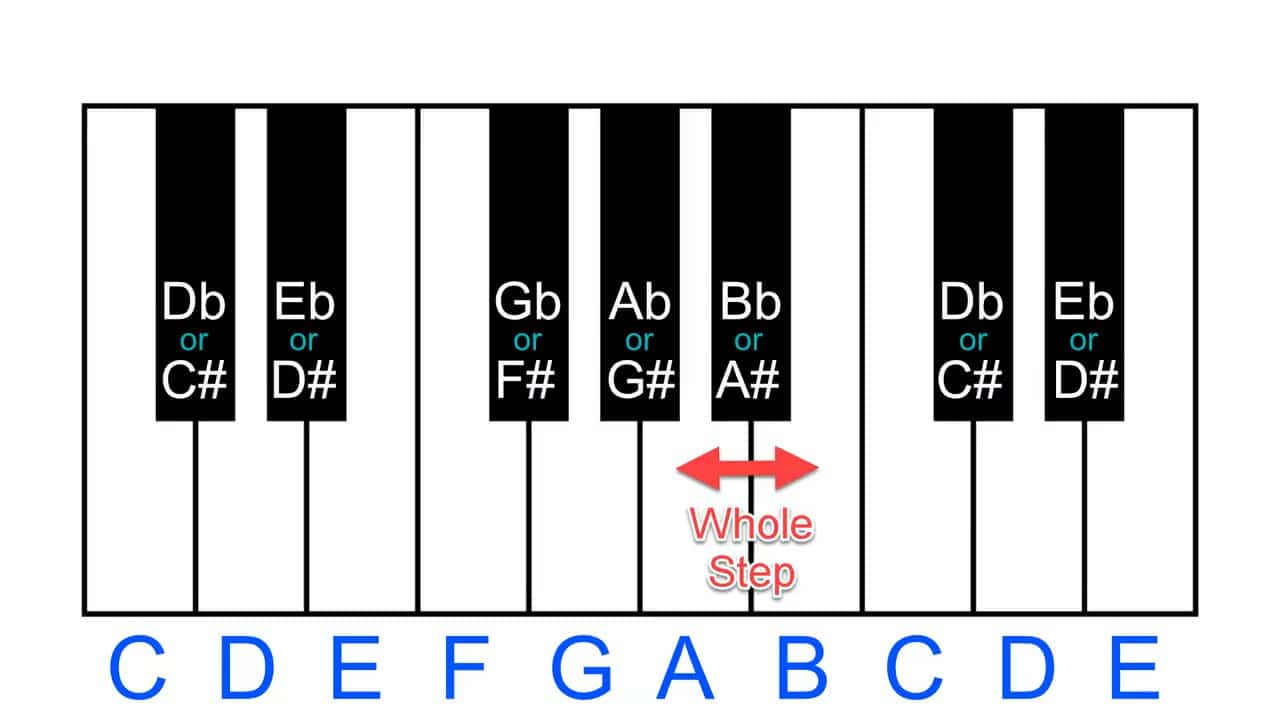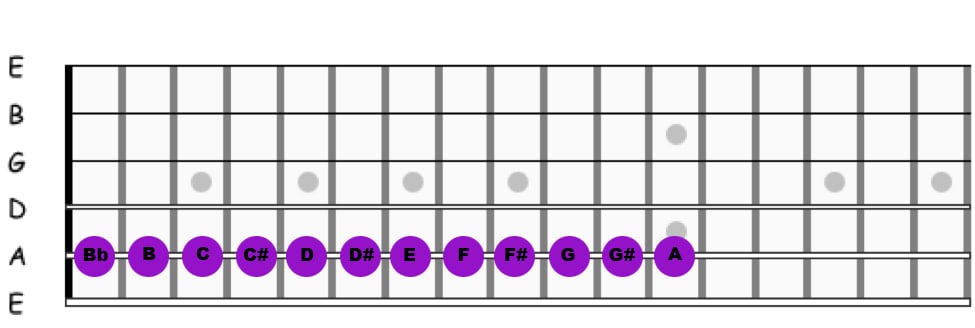Intervals are your friend. Imagine if you could see and control atoms. They make up everything, and you'd be quite powerful if you were able to control them. Well, scale intervals in music are the equivalent of atoms.
Intervals are integral to music and make up chords, melodies, improvisation, and just about everything else. Understanding and learning to hear and use scale intervals will open up a world of possibilities for you in music.
What are Intervals?


Intervals are the distance between any two notes. The distance between the notes and their arrangement is what makes up a scale. The smallest interval possible is a half-step. As you probably already know, a full step is just two half-steps.
If you look at a keyboard, the distance between a white key and its adjacent black key is a half-step. The same is true for white keys right next to each other (E and F, and B and C). Those are all half- steps.
Applied to the guitar, a half-step is an interval between adjacent frets. Naturally, if you go up and down two frets, you get a full interval.
Simple Intervals in Music

If you write down the musical alphabet from A, you get the notes A, B, C, D, E, F, G, and A. Going from one letter to the next is an interval of a second. So, from the note A to the note B, you get an interval of a second. Then, from A to C you get an interval of a third. A to D is a fourth, from A to E a fifth. Next, from A to F# you get an interval of a sixth, from A to B a seventh, and finally, from A to A you get an interval of an octave.
To be clear, you can actually start on any note. For instance, the difference between a C and D is a second. The same is true for the interval from E to F.
Scale Interval Qualities

Let's add the chromatic notes to the A minor scale from above. In other words, an A# between A to B, a C# between the C and the D, and so on. Now we delve into the quality of the intervals.
For instance, the interval of a second can be minor or major. In other words, from A to A# you get an interval of a minor second. From A to B, you get an interval of a major second. In other words, a minor second is just half a step and an interval of a major second is a full step.
Moving on to the intervals of thirds, from A to C you get a minor third, and from A to C# you get a major third. In other words, a minor third is three half-steps (or one and a half steps) and a major third is two full steps (or four half-steps).
Next up is the fourth. Here, there is no minor or major, we just call it a perfect fourth (two and a half steps), which is the interval from A to D.
Then we have a perfect fifth (three and a half steps), the interval between A and E. There is an interval called flat fifth, which is 3 full steps, or in this key, A to D#. It is a half step lower than the fifth.
Then, from A to F you get a minor sixth (4 steps), and from A to F# a major sixth (4 1/2 steps). Finally, A to G is a seventh (5 steps) and a to G# is a major seventh (5 1/2 steps).
Scale Intervals on the Guitar

Let's go to an open A string. Play that and then play the A string pressing on the first fret for a Bb note. That is your minor second interval.
The next fret up, (B), is a major second from the A where we started.
Then the next fret up you're at C, which is a minor third from A. Then another half-step up you're at C#, making a major third.
The fret up after that, and you'll be at a D, which is a perfect fourth from A. Another fret up from there, (sixth fret), you get a D#, which is a flat five interval.
Moving up, you get an E note at the seventh fret, for an interval of a perfect fifth. Next fret up you get an F, for a minor sixth interval.
Following a half-step up, we are at the 9th fret for an F#, a major sixth interval from A.
Next fret up, you get a G or a minor seventh. Moving one fret up, you get a G# or major seventh interval from A. One half-step further we are back at A for the octave.
Try It Out For Yourself!

Intervals make up music. Learning what they are, how they work, and knowing what they sound like will empower you. Don't try to learn all the info above in just one sitting. It is best if you work on it for a while.
Also, try doing the intervals on guitar like explained above and call out the interval names. Try it one the way up and back down. As always, remember to have fun and enjoy the process.
Be sure to check out and Subscribe to my YouTube Channel where every week I offer free tips, lessons, songs, and more to share with all of you! Bye for now.
Would you like an easy way to learn about guitar keys? Check out the post below!



